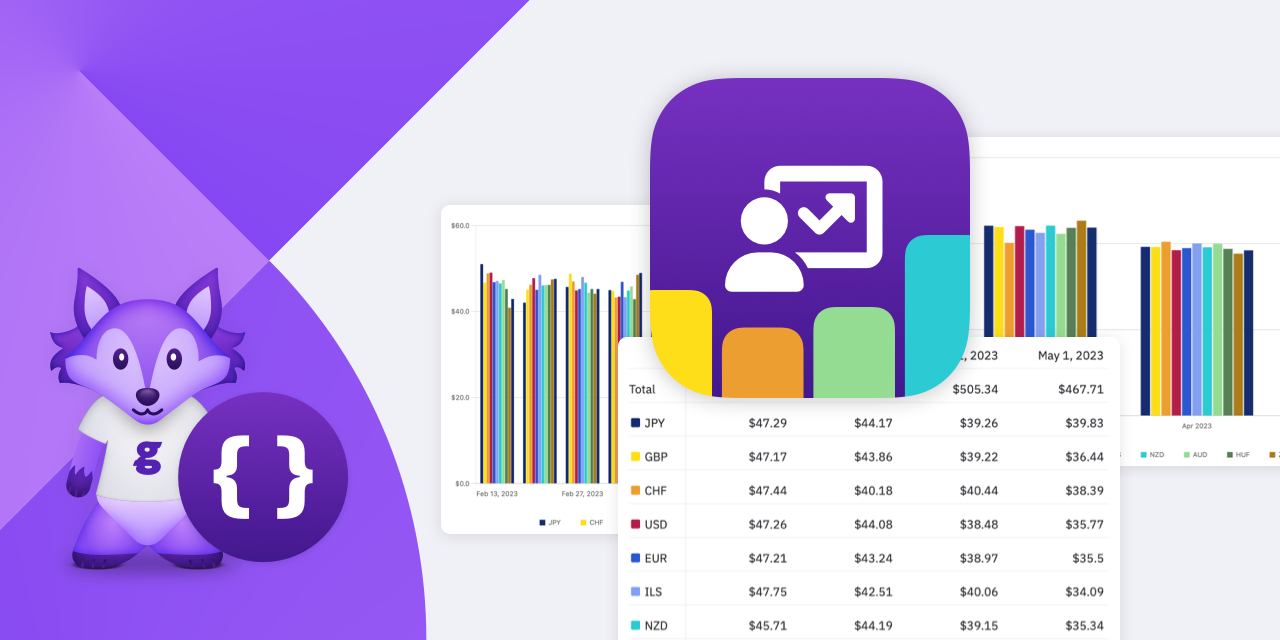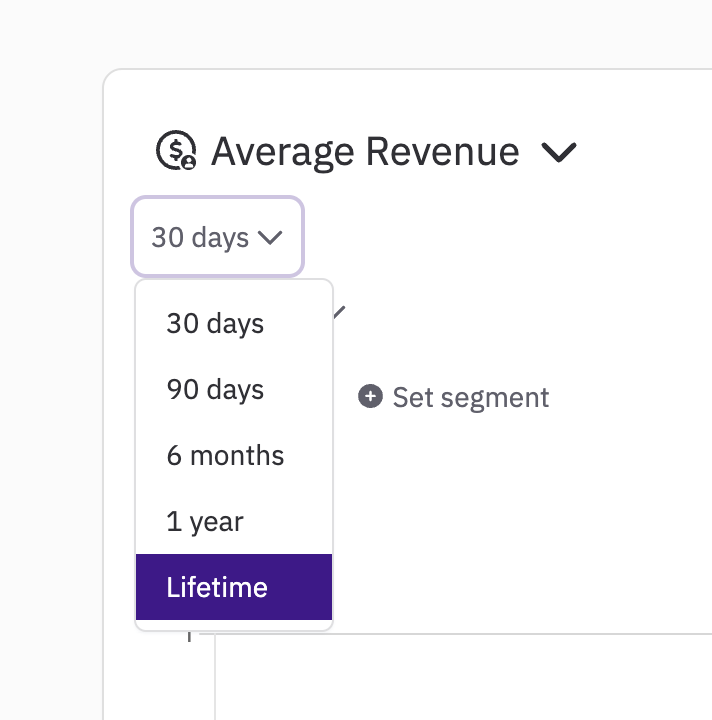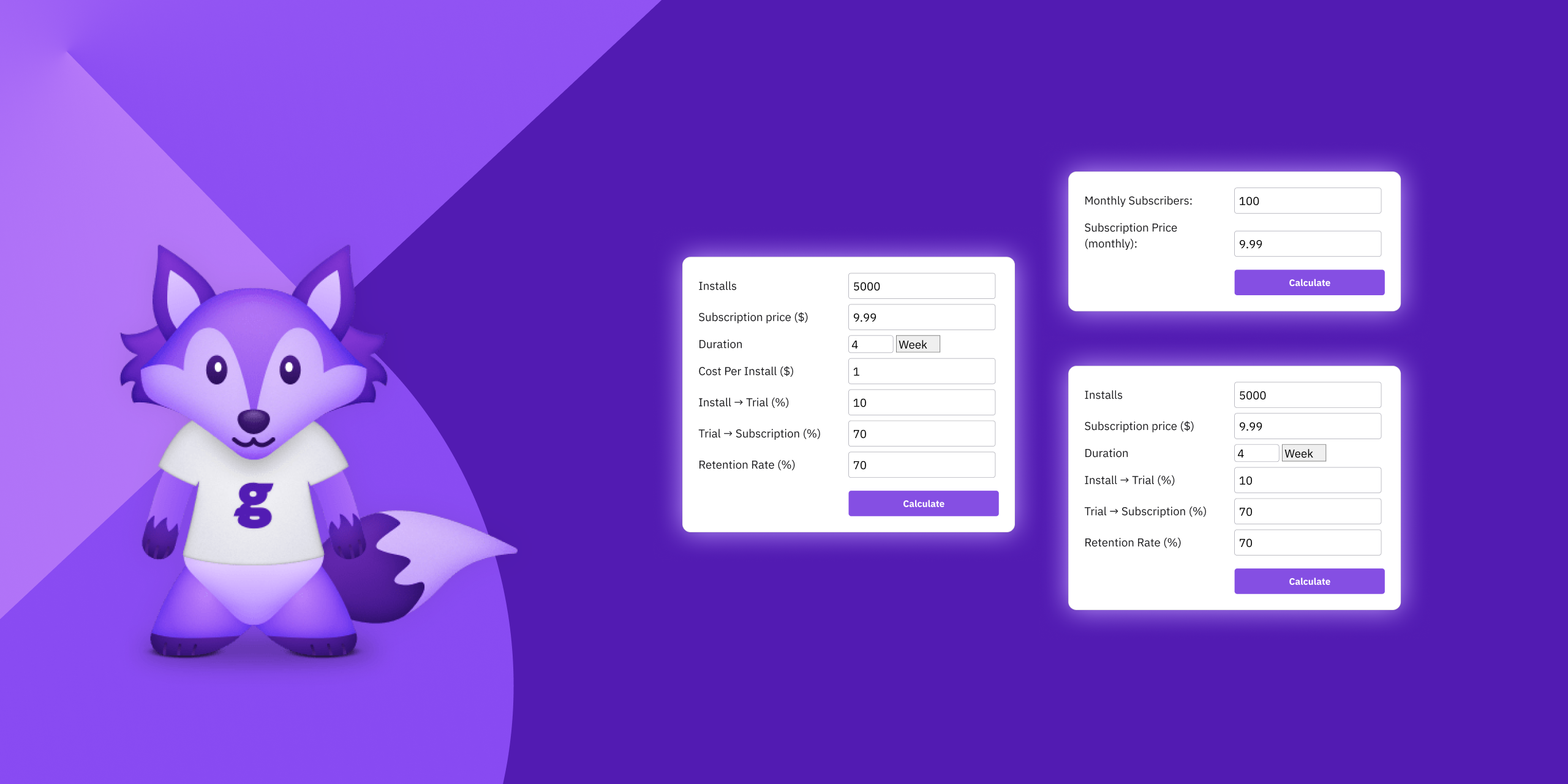Content
Unlocking Revenue Insights Part 1: A Series of Analytical Enhancements from Glassfy

At Glassfy, we understand the power of data-driven insights in propelling businesses to new heights. In fact, we do so much we have dedicated a new team to that at Glassfy. Over the coming weeks we will release significant enhancements to our analytics capabilities, empowering you to unlock untapped revenue opportunities - starting with this weeks release. Our upgraded reporting will offer actionable metrics that will help you drive revenue growth strategies and react faster to what is working and not working in your monetisation efforts.
This week we introduce Average Revenue, a flexible tool to help you explore trends in your ability to generate revenue.
Whats new
Average Revenue per User (ARPU)
To assess the overall financial performance of your business, it is crucial to understand the average revenue generated per user. With ARPU, you can gain insights into the average revenue earned from each user within a specified time period, such as 30 days, 90 days, 6 months, or 1 year. This metric enables you to gauge the monetization efficiency of your user base and identify specific cohorts that may exhibit higher ARPU, helping you allocate resources effectively and prioritize strategies for revenue optimization.
Average Revenue per Paying User (ARPPU)
For apps with a subscription model, it’s crucial to delve deeper into revenue analysis specifically among paying users. ARPPU allows you to measure the average revenue generated per paying user within within a specified timeframe, such as 30 days, 90 days, 6 months or 1 year. This metric provides insights into the spending patterns and value derived from your most valuable customers, enabling you to refine pricing strategies and enhance customer retention efforts.
Realised Lifetime Value (LTV) per User:
Determining the lifetime value of your users is key to understanding the long-term value they bring to your business. By lifting the constraint on the observation timeframe, Realised Lifetime Value per User provides an estimation of the total value a typical user generates over their entire lifecycle as a customer. By calculating this metric, you can make informed decisions regarding customer acquisition costs, customer segmentation, and personalised marketing strategies to optimize your overall business growth.
Realised Lifetime Value (LTV) per Paying User:
Similar to ARPPU we break down LTV by just paying customers. Lifetime Value per Paying User measures the total value generated by a paying user throughout their entire customer lifespan This metric can assist you in identifying high-value customers, focusing customer retention efforts, and tailoring loyalty programs to enhance customer satisfaction and long-term revenue streams to this specific group.
Where to find this update
Simply by going to the metrics page of the dashboard and you can navigate to “Average Revenue”, you can then further slice and dice this to include LTV and slice and dice by country, store, etc.

By expanding our analytics reporting to include these crucial metrics, Glassfy empowers you to gain deeper insights into your user base, revenue streams, and long-term business performance. Armed with these valuable metrics, you can make data-driven decisions, optimize your monetization strategies, and foster sustainable growth.
We are committed to providing you with the best possible analytics capabilities, giving you the competitive edge in this ever changing app marketplace and as a lot of you gain maturity on the subscription model. We will see you next week for our next release in our series of analytics enhancements.
Read More




